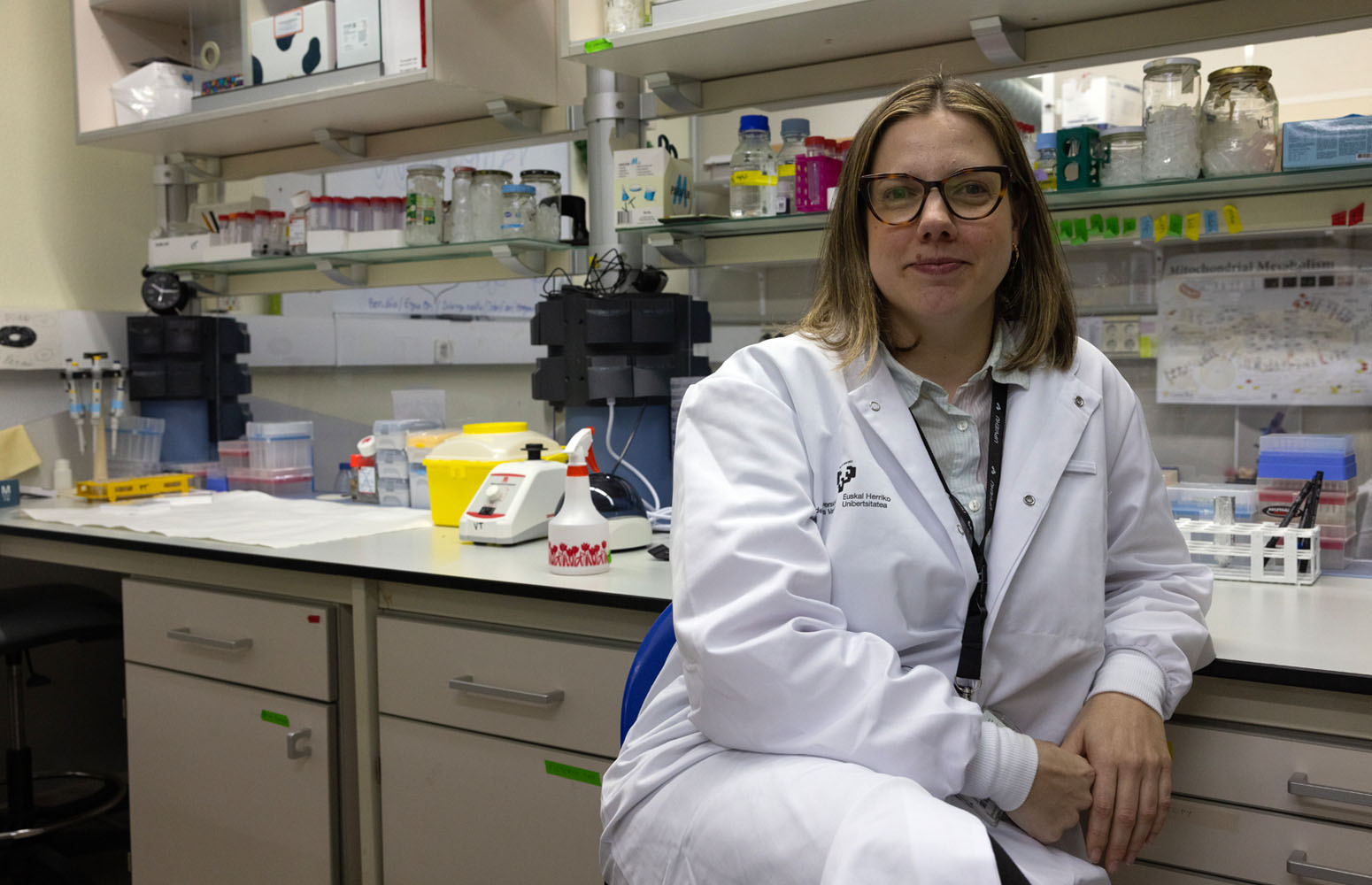The Ikerbasque Research Fellow of the University of the Basque Country (UPV/EHU) Noemí Jiménez-Rojo has been awarded an Early Career Research Grant to the tune of 1.2 million dollars by the Human Frontier Science Program (HFSP). Globally, this is one of the most prestigious grants in scientific research, awarded in a highly competitive call for applications and therefore translates into significant international recognition.
The UPV/EHU Ikerbasque research fellow Noemí Jiménez awarded a prestigious 1.2-million-dollar HFSP Research Grant
The project selected by the Human Frontier Science Program will be exploring the metabolic principles that regulate the formation of organic crystals inside cells
- Research
First publication date: 03/04/2025

The project led by Jiménez-Rojo, “MetaCrystal: Metabolic principles of intracellular crystallization” seeks to unravel how zebrafish manage to produce crystals that are key to their pigmentation with a level of precision in terms of size, shape and assembly that far exceeds our capacity to generate such structures synthetically. The outcomes obtained could facilitate the development of therapies to treat illnesses in which anomalous crystallisation occurs, such as kidney stones and gout, as well as the synthesis of organic crystals for optics and materials science. Dr Rita Mateus (Max Planck Institute of Molecular Cell Biology and Genetics, Germany) and Dr Viviana Monje (State University of New York at Buffalo, USA) are collaborating in Dr Jimenez’s project
The Human Frontier Science Program (HFSP) is a body that awards HFSP Research Grants intended for innovative projects that promote international collaboration and the pushing back of the frontiers of knowledge in the life sciences. Over the years, the HFSP has been supporting research that has led to key discoveries in biology and medicine, including projects led by scientists who have subsequently received Nobel Prizes.
The selection process is highly competitive, with very low success rates, as only the most original and ambitious projects receive funding. The proposal led by Noemí Jiménez was selected from among 111 candidates in the “young researchers” category (780 in total), placing her project among the five best evaluated in this call for applications. Of the 103 researchers participating in the 30 projects awarded internationally, only three are Spanish, with Dr Jiménez-Rojo being the only one in her category who figures as lead researcher/coordinator.
The Zebrafish as a model organism
Many living organisms are capable of producing organic crystals inside their cells to carry out a variety of functions. For example, the eyes of certain crustaceans use crystals to amplify their sensitivity to light in habitats where the light is poor. Another well-known example is the chamaeleon, which takes advantage of the light-reflecting properties of crystals to rapidly change the colour of its skin.
The zebrafish, the model organism used in this project, also produces crystals that play a key role in pigmentation. These form inside specialised cells called iridophores, in specific subcellular compartments, or organelles, known as iridosomes. In them, the control of the size, shape and assembly of the crystals occurs with a precision that currently far exceeds our capacity to produce such structures synthetically. “Through this study, we are planning to discover how this process occurs, by taking an essential but hitherto unexplored structure into consideration: the lipid membrane that surrounds each crystal within the cells. We want to understand which molecules make up the iridosome membrane and to what extent they can contribute towards the formation of crystals with such excellent precision,” explained Jiménez.
To do this, they will be applying a highly interdisciplinary approach combining cutting-edge techniques in molecular biology, such as CRISPR-Cas9, with analytical techniques such as lipid and protein mass spectrometry and molecular modelling. They will also be using novel chemical biology methods to measure and manipulate the biophysical properties of the iridosome membrane and to track the function of the molecules identified in zebrafish, as well as in primary iridophore cell cultures. “The data obtained will help us to synthetically reconstitute a biomimetic system capable of producing crystals with a scale and morphology comparable to those produced by zebrafish under physiological conditions,” she added.
These results could facilitate the development of therapies to treat illnesses in which anomalous crystallisation occurs, such as kidney stones and gout, but they will also contribute towards the development of new metamaterials.
About the researcher
Noemí Jiménez-Rojo (Leioa, Basque Country, 1986) was awarded her PhD in Biomedicine and Molecular Biology by the University of the Basque Country (UPV/EHU) where she worked in the field of membrane biophysics. After completing her PhD she specialized in lipidomics, cell biology and biological chemistry at the University of Geneva (Switzerland). Her work has significantly contributed towards the field of lipid biology, in which the importance of the lipid composition in cellular processes stands out. Throughout her career she has received various awards and grants, such as the Darlene Solomon Award (2021) sponsored by Females in Mass Spectrometry & Agilent, a María Zambrano Grant and an Ikerbasque Research Fellowship, in addition to various predoctoral and postdoctoral grants from the Basque Government.


